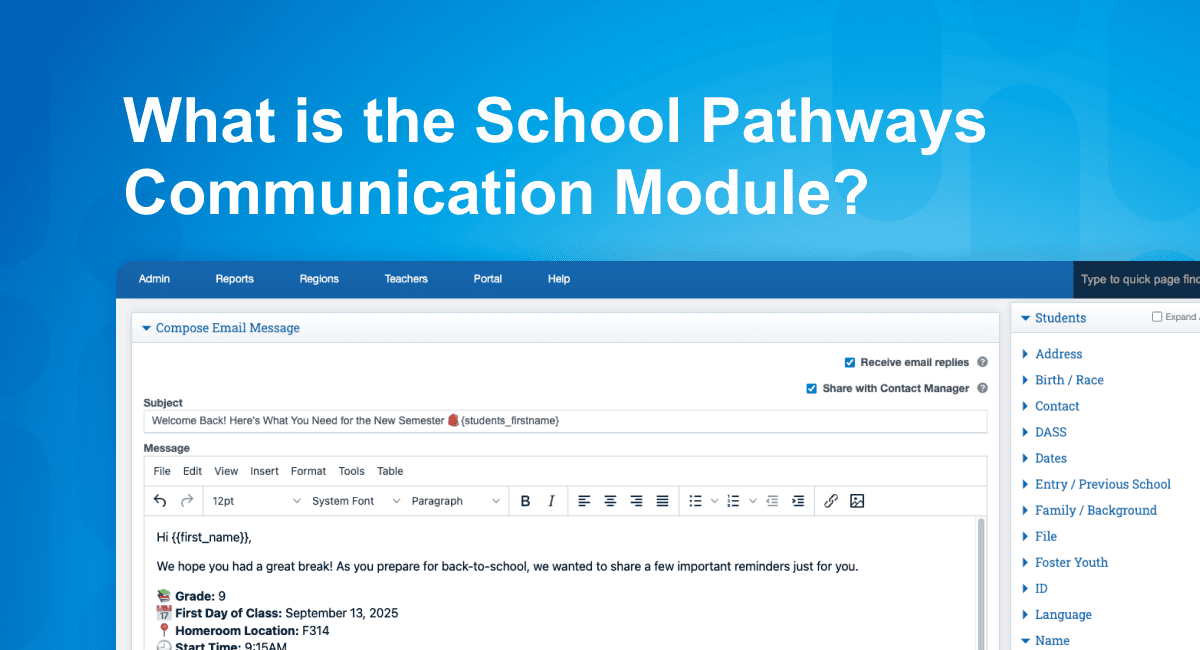In the United States, more than 2.7 million students are involved in some type of online learning program. Furthermore, many students in grades K-12 are benefiting from a high-quality online education. While enrollment numbers continue to climb, a big stressor we’ve been hearing about from teachers at virtual schools or working in any capacity with an online or hybrid learning environment is finding ways to keep students interested and engaged.
Fortunately, we have five strategies you can use to ensure that your students get the best online education possible. Read on to learn more.
Outline Clear Expectations Around Online Student Engagement
It’s important to start off on a strong foot by outlining clear expectations for your students before courses begin. Consider sending your students an email two to three weeks ahead of time. Use that as an opportunity to introduce yourself and provide them with any information they can use to be successful. This could include the schedule for synchronous class meetings, course textbook information, and your expectations for student etiquette and participation in online course activities.
Another way to set expectations for your students is by clearly identifying assignment due dates. You can include these dates within your syllabus or in online learning platforms. It can also be beneficial to make the course materials available early. This way, students can take a look at all the important information, ask any clarifying questions, and prepare beforehand.
Finally, set your office hours well in advance and post your course’s policies and expectations online and in the syllabus.
Build Motivation and Engagement With Different Content and Activities
Providing engaging content and activities can ensure that your students get all the advantages of online learning’s flexible and fun potential. Working in a virtual or hybrid environment isn’t so different from a traditional classroom, but it does open up new possibilities for the type of work students can do and the style in which they do it. Begin by including various forms of content in each course, such as:
- Interactive learning objects
- Multimedia
- Journal articles
- Textbooks
We also recommend that you create recurring touchpoints throughout a course by giving your students a short introduction as they approach a new section or module. This will make it possible for you to provide clarity and purpose, draw attention to key/significant concepts, and answer any questions. Additionally, once a topic is complete, provide your students with related activities to reinforce the learnings and surface any learning gaps.
When you assign these activities, again, be clear about your expectations so students know how to complete them.
Other strategies include allowing students to share their reflections on what they’ve learned, sending out reminders of homework due dates, and supporting students’ abilities to create, edit, and explore.
For example, if you provide students with an assignment, you can make it broad enough that the students can select specific parameters according to their interests.
Create Staff Presence and Initiate Interaction
Because you won’t have the same foundational physical classroom or traditional office space, you will need to create a staff presence and initiate interactions intentionally. Help your students get to know you with information like your personal and professional interests, favorite animal or pets so that you have a human-to-human interaction and you’re not just a name assigning grades. Secondly, create a communication plan. This way your students will know how they can best contact you and when they should expect to hear back.
You should also provide feedback on student work frequently and interactively so that students can grow and improve their work intuitively. Again, the more your setup feels like a known quantity, the less amorphous and inconsistent student engagement will be.
You should also host office hours virtually and make it possible for students to message you via text through online platforms.
Really encourage students to ask any questions they might have through any format, whether they’re working individually at home, online in a breakout room, or when they’re in one-on-one meetings with you. This can be helpful in lowering the barrier for outreach if your students are struggling with time management, want privacy, or are experiencing anxiety.
Foster Student-to-Student Interaction and Create a Community of Learning
When it comes to online vs. in-person learning, fostering interaction and creating a sense of community is more challenging online. Fortunately, there are some strategies you can use including encouraging your students to engage in reflective and critical group discussions.
You can also assign team projects so your students can work together, both gaining that peer-to-peer interaction in the now and as well as developing teamwork skills that will be needed throughout life.
You may also want to consider using elements of online learning sites like breakout rooms for study groups or an online whiteboard for group collaboration to create more interaction among students. Another option is to encourage your students to form their own cohort by connecting on social media. Additionally, you can connect the content of your course to campus events and workshops, and encourage school-wide activities like student government.
Create an Inclusive and Individualized Environment
Many students decide to take part in virtual and hybrid programs because they have unique learning styles or needs, so be aware that each student may require different engagement tactics and communications. Know that some students might start to struggle and check in with these students to discuss their individual experiences and how they’re feeling about their setup or structure (beyond simply going into the content of coursework).
Remember too that it’s important to be lenient and flexible. Even though students should be aware of expectations and due dates, everybody goes through ebbs and flows in their wider life, so let your students know what to do if they need extensions or want an alternative assignment. This openness and understanding set the tone for students to come to you more proactively instead of vaguely falling out of engagement until you’re finally able to get back in touch.
On the whole: recognize your students’ different life experiences, check your assumptions, and be aware of accessibility needs.
Want to Learn More About Keeping Students Engaged?
Now that you’ve learned strategies for keeping students engaged in online learning, you might have additional questions about how to logistically track engagement or the most popular platforms for digital content. Whatever information you need, we can help. At School Pathways, we’re experts when it comes to online learning and guiding you through the best practices that will ensure student success.





